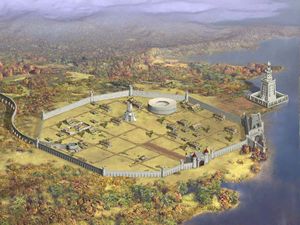Boldly go where no Mao has gone before.
When you make a popular, quality product (for instance, a luxury automobile), you do not have to do much with future releases to keep people happy. Improve the things that already work so that they are more convenient and efficient, change the things that are annoying, make everything look a little more contemporary and Presto! – owners of the older model will want the new one and some new customers will also appear to sweeten the pot. If you don’t mind taking a risk, you can also innovate in ways that will set your product apart from competitors who have already copied your previous innovations.
It’s safe to say that Sid Meier does not mind taking risks, and hard to argue with the notion that his Civilization series is perhaps the best-loved, most addictive product in the history of computer games. If they wished, Firaxis could simply update the graphics, add a few new units, put Sid Meier’s name on the box and still outsell everything else in the field two-to-one.
Thankfully, Firaxis is not 3DO [Ouch. – Ed] and Civilization III is not merely an updated sequel. After two years of hard work, they are very close to finishing the game that rabid Civ fans have been dreaming about (and one that is likely to draw in the three people in Uzbekistan who have never played Civ I or Civ II).
The core gameplay, of course, has not changed. You will still be the architect of your civilization’s rise from a single, prehistoric settlement to a globe-spanning, nanotech-wielding empire. The game will still progress by turns, and your units will still move across the 3/4 isometric world map meeting, greeting and (sometimes) obliterating your neighbors, building new cities, connecting them with roads and irrigating until your heart’s content. You can still win by conquering the world, by reaching Alpha Centauri first, or by other means yet to be released.
If diplomacy should fail, however, Civ III continues in the Sid Meier tradition of diverse military solutions with a variety of military units. Civilization-specific units have been added, along with more general units, special leader units and additional modes of attack. The units have been graphically updated as well; each icon has over 170 frames of animation. This allows for several attack and defense animations, breaking up the monotony of repeated battles.
All of these improvements are expected and welcome, but there are also some significant innovations lurking under the hood of Sid’s latest. The most significant of these is the inclusion of "Culture" as a factor in the game. In its simplest form, culture is the significance of your civilization in the gestalt culture of the planet. Some wonders, for instance, will continue to produce culture "points" even after they stop providing other benefits for your civilization. When you produce enough culture points, your civilization’s territory expands by one tile in all directions.
Culture is not the only new way in which you impact the larger world. The role of trade has also been greatly expanded and significantly changed. Gone are the tiresome caravans and freight units. Instead, simply connecting two cities with a road (or building ports in both of them if they are coastal) establishes trade routes. This is particularly important since the game’s continent generator virtually guarantees that you will not have access to all of the resources or luxuries that you will need.
Whichever resources those might be, you will certainly want to trade for them. As you progress up the technology tree, you will find that several more advanced units require that you have access to specific resources if you wish to build them. To make things more complicated, many resources will not even show up on the map until after certain technologies are discovered. This means that an area you ignored or gave to the Phoenicians (in return for some wicked-cool bronze deposits) may turn out to someday be rich in oil or uranium. Surprise!
Changes like these should force even the most addicted players to rethink their tried-and-true strategies and ensure that no two games follow the same pattern. Likewise, novice players will be happy to learn that the overall design of the game allows for coaching and hints to ease them into the Civ world. Advisors, in particular, have been greatly enhanced. It is rumored that this time they will actually provide useful advice.
Overall, Civilization III looks like everything you have probably hoped it would be. The heart of the game still has that "just one more turn, then I promise I’ll go to bed, dear" addictive quality that has broken up marriages and fractured careers for a decade now. The new features and changes should do nothing but enhance that experience by streamlining the flow of information, forcing you to experiment with a greater number of strategies and offering new challenges each time you play. If the final version of the game lives up to the build we saw at E3, you can actually believe the hype. Civ III will not let you down.










